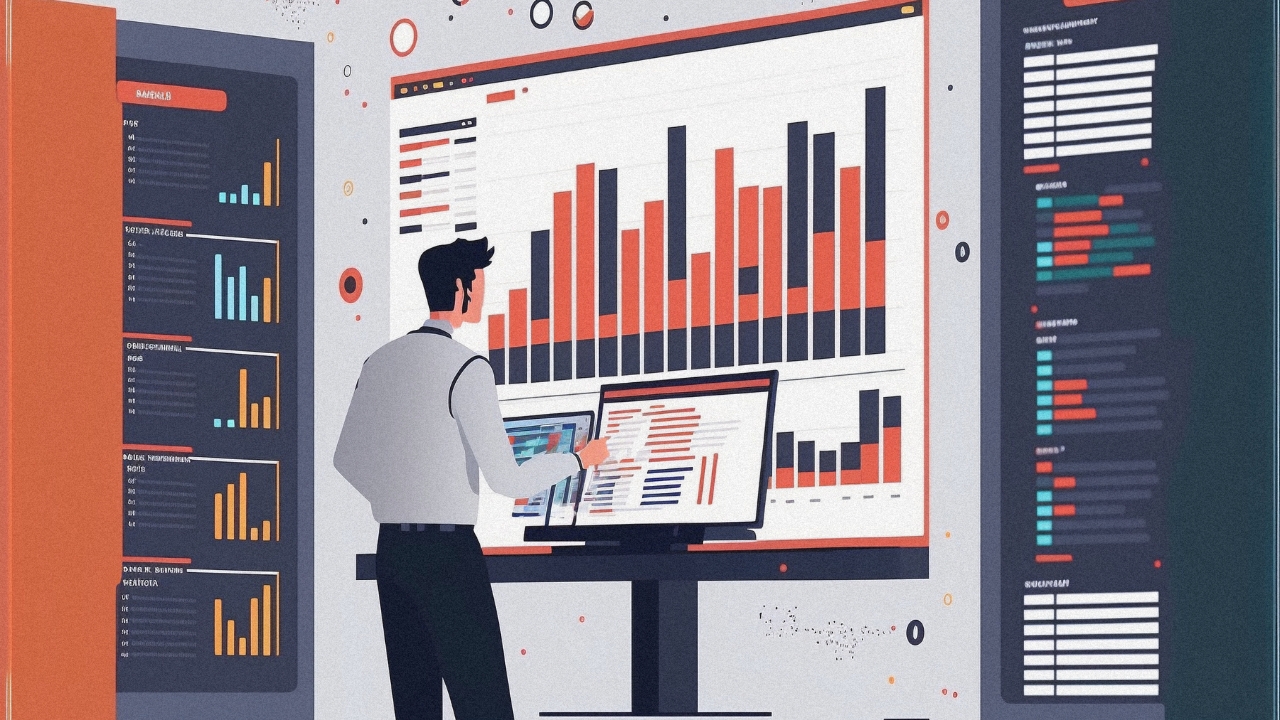
Organisational data is everywhere. From financial records to customer engagement data and website analytics, it enables businesses to make data-driven decisions that improve overall customer satisfaction and enhance operations.
But the more data we have, the harder it is to govern. And the harder data is to govern, the more challenging it becomes to find and manage the most valuable data, or master data, at an organization’s disposal.
The result is that an organisation’s most valuable data can become unreliable, inefficient and effectively useless without proper management across the business. That’s where master data governance can help.
This article tells you everything you need to know about master data governance, including what it is, how it works, and who needs it.
What is master data governance?
Master data governance is the process of setting up rules and procedures designed to ensure the quality, consistency, and accuracy of critical data within an organization.
This data, often referred to as "master data," forms the foundation for many important business functions like customer relationship management (CRM) or enterprise resource planning (ERP).

Imagine you have a customer named "John Smith" in your marketing system, but "J Smith" in your sales system. This inconsistency can lead to problems - for example, you might send John marketing emails twice, or struggle to track his order history.
Master data governance helps to avoid this by establishing a single, trusted source of truth for this kind of data With good data governance, everyone in the organization is working from the same "single source of truth," which can lead to better decision-making, improved efficiency, and reduced costs.
How does master data governance work?
Master data governance involves setting up a clear governance framework that ensures your organization's master data is consistent, accurate, and reliable.
This framework defines how master data should be managed across the organization, covering things like data naming conventions, data quality standards, and who is authorized to edit different types of data.
One key aspect of a governance framework is establishing roles and responsibilities. This includes a data governance council to oversee the program, data stewards who are accountable for specific data domains (like customer data or product data), and data users who need to access and adhere to the guidelines.
Master data governance also defines clear processes for individuals to manage data throughout its lifecycle, including data created, captured, stored, shared, and ultimately retired. Programs are often supported by software tools that automate tasks like data cleansing, standardization, and managing data workflows. These tools can also help track data lineage, which is the history of how a piece of data was created and transformed.
Key components of master data governance
Master data governance is all about setting the rules of the road for how your organization manages its critical data. While the specifics can vary depending on your company, some key elements are essential for an effective program. These include:
1. Data Stewards
These are individuals who are responsible for overseeing the quality and accuracy of specific domains of master data. Data stewards typically come from the business units that own and use the data. This deep understanding of the data's purpose and usage allows them to make informed decisions about how to manage it effectively.
2. Data standards
Data standards ensure consistency and accuracy in your master data. Imagine everyone in your company using slightly different formats for customer addresses. Data standards would define the specific format, like "Street Redirected URL, City, State ZIP Code" to avoid confusion and errors.
3. Data quality processes
Data quality processes are the procedures and steps taken to identify, prevent, and correct errors in your master data. These processes ensure the data maintains its integrity, consistency, accuracy, and completeness.
Data quality processes are crucial for master data governance because they directly impact the reliability and usefulness of your core business data. By having established procedures for data quality, you can ensure that your master data remains trustworthy and supports informed decision-making.
4. Data governance policies
Data governance policies are a set of formal rules that define how your organization's master data will be managed. Think of them as the instructions or guidelines that everyone in the organization needs to follow to ensure the master data is reliable and usable.
Effective data governance policies are essential for ensuring the quality and trustworthiness of your master data. This in turn allows for better decision-making, improved operational efficiency, and reduced risks associated with inaccurate or inconsistent data.
3. Data governance tools
Data governance tools are software that support the master data governance process by helping you automate tasks, enforce policies, and gain insights into your master data. They include:
- Master Data Management (MDM) solutions: These are specialized platforms designed to create a single, centralized repository for your master data. MDM solutions help ensure consistency and accuracy by providing features for data cleansing, deduplication, and standardization.
- Data quality tools: Data quality tools focus on identifying and correcting errors within your master data. They can automate tasks like identifying missing values, detecting inconsistencies, and suggesting corrections.
- Data lineage tools: These tools map the flow of data throughout your organization, showing how master data is created, transformed, and used in different systems. Data lineage is crucial for understanding the impact of changes to master data and ensuring data integrity.
- Data catalog tools: These tools create a searchable registry of your organization's data assets, including master data. Data catalogs help users discover what data is available, where it's located, and how it can be used.
- Data access control tools: These tools manage user permissions and enforce data governance policies around who can access and modify master data.
What are the benefits of master data governance?
1. Improved Data Quality
Master data governance tackles the problem of data – inaccurate, incomplete, or duplicated information. The process establishes a central repository for critical data entities like customers, products, and locations, eliminating the issue of siloed data, where the same information might be stored differently in various systems.
It also defines clear data standards and creates consistent data definitions across the organization. This ensures everyone uses the same terminology and formats when entering data, reducing ambiguity and confusion and improving overall data quality.
2. Streamlined Operations
By establishing data ownership and access controls, Master data governance allows for secure and efficient data sharing across departments. This breaks down silos and fosters collaboration, allowing teams to work together more effectively towards achieving common goals. Meanwhile, streamlined workflows, reduced errors, and improved data accessibility lead to faster turnaround times, better resource allocation, and ultimately, a more agile and responsive organization.
3. Better Decision-Making
MDG eliminates duplicates and inconsistencies within critical data sets like customer information, product details, or financial records, meaning you're basing your decisions on a clear and accurate picture, not misleading or incomplete data. This enables business leaders to make data-driven decisions based on accurate information, leading to better strategies and improved performance.
4. Enhanced Regulatory Compliance
Master data governance establishes clear policies and procedures for handling data across the organization. This ensures data is collected, stored and managed in a way that aligns with common data privacy regulations, including the EU’s GDPR. The process also helps track the lineage of data, making it easier to demonstrate how data was obtained and processed, which is often required by regulations.
5. Reduced Costs
When data is messy and unreliable, employees spend significant time searching for accurate information or cleaning up bad data. Master data governance streamlines data access and reduces the need for these time-consuming tasks, freeing up resources for more valuable activities. It also paves the way for automating repetitive tasks that rely on accurate data, leading to increased efficiency and cost savings.
6. Increased Customer Satisfaction
With a unified view of customer data, businesses can gain a deeper understanding of their customers' needs and preferences. This allows for more personalized interactions, such as targeted marketing campaigns, relevant product recommendations, and tailored customer support experiences. Imagine receiving birthday discounts instead of generic promotions – that's the power of good customer data.
7. Stronger Data Foundation for Innovation
Innovation thrives on reliable data. MDG ensures data accuracy and consistency across the organization. This eliminates inconsistencies that can lead to misleading insights and dead-end ideas. With clean data, innovators can trust the information they're working with, leading to more credible and effective innovations.
Implementing master data governance
Implementing master data governance is a step-by-step process that ensures the quality, consistency, and accessibility of your core data.
First, identify the specific data domains you want to focus on for master data governance. This could include customer data, product data, or financial data. Then, set clear goals for your program, such as improving data quality, reducing errors, or enhancing regulatory compliance and establish a framework on how to achieve them.

This framework should outline the overall structure and principles for managing your master data and should define roles and responsibilities, establish data governance committees, and outline data governance processes. It should also define the specific criteria for high-quality master data. This includes setting standards for accuracy, completeness, consistency and data quality.
Once your master data governance framework is in place, continue to monitor it's effectiveness. Track key metrics like data quality levels, compliance rates, and user satisfaction, and use this data to identify areas for improvement and refine your program as needed.
By following these steps and leveraging the right data governance tools, you can establish a robust framework for managing your master data, ensuring its quality and enabling better decision-making across your organization.












